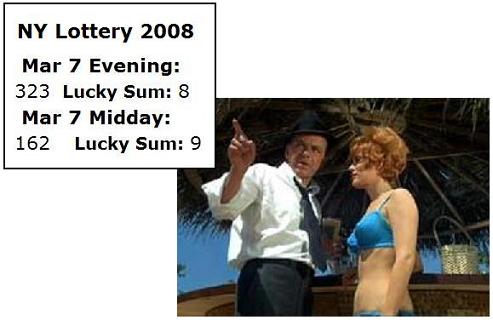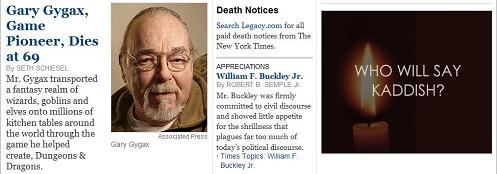|
Posted 3/31/2008 at 12:00 PM |
|
x Posted 3/31/2008 at 3:00 AM |
|
The Thing Itself From a summary of Sartre's Being and Nothingness:"The human can never know being as it truly is, for to do that, one would have to be the thing itself. To know a rock, we have to be the rock (and of course, the rock, as a being-in-itself, lacks consciousness). Yet the being-for-itself sees and intuits the world through what is not present. In this way, the being-for-itself, already wholly free, also possesses the power of imagination. Even if absolute beauty (to Sartre, the absolute union of being and consciousness) cannot be apprehended, knowing it through its absence, as in the way one feels the emptiness left by a departed loved one, is its own truth." -- Anonymous author at sparknotes.com Posted 3/30/2008 at 3:14 PM |
|
Being and Nothingness "From this I reach what I might call a philosophy; at any rate it is a constant idea of mine; that behind the cotton wool [of daily life] is hidden a pattern; that we-- I mean all human beings-- are connected with this; that the whole world is a work of art; that we are parts of the work of art. Hamlet or a Beethoven quartet is the truth about this vast mass that we call the world. But there is no Shakespeare, there is no Beethoven; certainly and emphatically there is no God; we are the words; we are the music; we are the thing itself." -- Virginia Woolf, "A Sketch of the Past," 1939-40, in Moments of Being "And I a maid at your window, -- Ophelia, Hamlet IV. v. "Ophelia’s story becomes the Story of O-- the zero, the empty circle or
mystery of feminine difference, the cipher of female sexuality to be
deciphered by feminist interpretation." -- Elaine Showalter, "Representing Ophelia: Women, Madness, and the Responsibilities of Feminist Criticism." Hamlet. Ed. Susanne L. Wofford. Boston: Bedford Books of St.Martin’s Press, 1994. 220-238. Posted 3/28/2008 at 2:14 PM |
|
Judgment at Hollywood "Judgment at Nuremberg" screenwriter Abby Mann in this morning's New York Times obituaries:  Click image to enlarge. Related material: The Log24 entries of March 15 - 25. (Tuesday, March 25, was the date of Mann's death.) "Philosophers ponder the idea of identity: what it is to give something a name on Monday and have it respond to that name on Friday...." -- Bernard Holland in The New York Times See also the five Log24 entries ending on Feb. 25. Posted 3/28/2008 at 2:02 AM |
|
x Posted 3/27/2008 at 7:29 PM |
|
Back to the Garden Note the resemblance of the central part to a magical counterpart-- the Ojo de Dios of Mexico's Sierra Madre. "A severely underrated Scope western, shot in breathtaking mountain locations near Cuernavaca. Widmark, Gary Cooper and Cameron Mitchell are a trio of fortune hunters stranded in Mexico, when they are approached by Susan Hayward to rescue her husband (Hugh Marlowe) from a caved-in gold mine in Indian country. When they arrive at the 'Garden of Evil,' they must first battle with one another before they have to stave off their bloodthirsty Indian attackers. Widmark gives a tough, moving performance as Fiske, the one who sacrifices himself to save his friends. 'Every day it goes, and somebody goes with it,' he says as he watches the setting sun. 'Today it's me.' This was one of the best of Hollywood veteran Henry Hathaway's later films. With a brilliant score by Bernard Herrmann." See also the apple-tree entries from Monday (the date of Widmark's death) and Tuesday, as well as today's previous entry andprevious Log24 entries on Cuernavaca. Posted 3/27/2008 at 3:29 PM |
|
A Saint for Richard Widmark From this morning's New York Times: Click image to enlarge. The "Boy's Life" illustration is of an Arthur C. Clarke story, "Against the Fall of Night." This, according to the review quoted below, was Clarke's first story, begun in 1936 and first published in 1948. The title is from a poem by From a book review by Christopher B. Jones:
An example of such a xenophobic society is furnished by the Hadassah ad currently running in the New York Times obituaries section: "Who will say Kaddish in Israel?" Another example: Tom Stoppard, in the London Times of Sunday, March 16, 2008, on the social unrest of forty years ago in 1968-- "Altering the psyche was supposed to change the social structure but, as a Marxist, Max knows it really works the other way: changing the social structure is the only way to change the psyche. The idea that 'make love, not war' is a more practical slogan than 'workers of the world unite' is as airy-fairy as the I Ching." Airy-fairy, Jewey-phooey. Clarke's 1948 story was the basis of his 1956 novel, The City and the Stars. In memory of the star Richard Widmark, here are two illustrations from St. Mark's Day, 2003: Housman asks the reader Here, as examples, are
Neither part of this memorial suits the xenophobic outlook of Israel. Both parts, together, along with his classic film "The Long Ships," seem somehow suited to the non-xenophobic outlook of Richard Widmark. As for the I Ching... perhaps Widmark has further voyages to make. Posted 3/27/2008 at 2:45 AM |
|
Dancers and the Dance The previous entry was inspired (see the "In the Details" link) by the philosophical musings of Julie Taymor... specifically, her recollection of Balinese dancers-- "... they were performing for God. Now God can mean whatever you want it to mean. But for me, I understood it so totally. The detail.... Here is some further commentary on the words of that entry-- "Bernard’s understanding of reality connects to this idea of 'flow': he sees reality as a product of consciousness. He rejects the idea of an 'outer' world of unchanging objects and an 'inner' world of the mind and ideas. Rather, our minds are part of the world, and vice versa." On "Death and the Apple Tree"-- the title of the previous entry-- in The Waves: "The apple tree Neville is looking at as he overhears the servants at the school discussing a local murder becomes inextricably linked to his knowledge of death. Neville finds himself unable to pass the tree, seeing it as glimmering and lovely, yet sinister and 'implacable.' When he learns that Percival is dead, he feels he is face to face once again with 'the tree which I cannot pass.' Eventually, Neville turns away from the natural world to art, which exists outside of time and can therefore transcend death. The fruit of the tree appears only in Neville’s room on his embroidered curtain, a symbol itself of nature turned into artifice. The apple tree image also echoes the apple tree from the Book of Genesis in the Bible, the fruit of which led Adam and Eve to knowledge and, therefore, expulsion from Eden." Posted 3/25/2008 at 9:00 AM |
|
Death and the Apple Tree Today's New York Times on the late "fifth Beatle" Neil Aspinall, who died Easter night in Manhattan: "... he played tambura (an Indian drone instrument) on 'Within You Without You'...." Related material: "Hanging from the highest limb of the apple tree are the three God's Eyes..." -- Ken Kesey
Posted 3/24/2008 at 3:00 PM |
|
Posted 3/23/2008 at 11:00 AM |
|
x Posted 3/22/2008 at 3:09 PM |
|
x Posted 3/22/2008 at 3:07 PM |
|
x Posted 3/21/2008 at 3:00 PM |
|
x Posted 3/17/2008 at 12:00 AM |
|
Real Numbers (continued from March 7, 2008)  A search for the evening number, 332, in Log24 yields a rather famous line from Sophocles... Sophocles, Antigone, edited by Mark Griffith, Cambridge University Press, 1999:  "Many things are formidable (deina) and none is more formidable (deinoteron) than man." -- Antigone, lines 332-333, in Valdis Leinieks, The Plays of Sophokles, John Benjamins Publishing Company, 1982, p. 62 Continuing the search within Antigone for the mid-day number, 874, we find...  "Power (kratos), for one who is concerned with power (kratos), is in no way to be transgressed." -- Antigone, lines 873-874, Leinieks, op. cit. p. 69 Both passages from Sophocles seem not unrelated to yesterday's entry for the Ides of March and to last night's opening routine on "Saturday Night Live." The above word deina (formidable, wonderful, awesome) in the latter context suggests the following meditation:
"... it's going to be accomplished in steps, this establishment of the Talented in the scheme of things." -- Anne McCaffrey, Radcliffe '47, To Ride Pegasus  Related material: The Log24 Pi Day mantra from Roger Zelazny -- "center loosens, forms again elsewhere." Posted 3/16/2008 at 1:20 AM |
|
"... his teaching efforts... climax, every school year, with the Mr. Julius Caesar contest...." -- Roger Ebert, review of the 2002 film "The Emperor's Club" And the winner is... Client 9! Posted 3/15/2008 at 1:00 PM |
|
x Posted 3/14/2008 at 3:14 PM |
|
Rite of Spring From the online Harvard Crimson --  Related material: A figure from Monday's entry --  -- and June 30, 2007's Annals of Theology, with a link to a film: The Center of the World. The center referred to in that film is the same generic "center" displayed at Harvard and in the above mandorla: not the Harvard Women's Center, but rather the women's center. See also Yeats -- "the centre cannot hold," Stevens -- "the center of resemblance," and Zelazny -- "center loosens, forms again elsewhere." Posted 3/14/2008 at 12:00 AM |
|
x Posted 3/12/2008 at 11:09 AM |
|
Mani Padme (Jewel in the Lotus): Part I "Raiders of the Lost Stone" (March 10, 2006) Part II "Raiders of the Lost..." (Feb. 17, 2006) Part III The Further Adventures of Tony Rome (March 7, 2008) Parts I and II above may be summarized by the famous phrase "jewel in the lotus"-- which, some say, has a sexual meaning-- and by the diagram  For discussions of this structure in Western thought, see the ovato tondo and Last to the Lost. Posted 3/10/2008 at 9:00 PM |
|
Identity  Click for context. Related material: Is Nothing Sacred? Pictures of Nothing Art Wars: Epiphany Tilting at Whirligigs Down the Up Staircase Posted 3/9/2008 at 1:00 AM |
|
of literary "signature passages" --  An answer: "The whirligig of time" -- Shakespeare, Twelfth Night and Log24, Twelfth Night, 2006: Hamilton's Whirligigs  Click image to enlarge. Related material: Rotation in the complex plane. The plane was discovered in the late 1700's by Wessel: Posted 3/8/2008 at 1:00 PM |
 "We keep coming back -- Wallace Stevens, Posted 3/7/2008 at 8:28 PM |
|
Setter of Riddles "Philosophers ponder the idea of identity: what it is to give something a name on Monday and have it respond to that name on Friday...." -- Bernard Holland in The New York Times 2:45 AM Monday:  Related material: A Kaddish for Raymond Obituary of Paul Raymond in today's New York Times: "He left school at 15 and had his first experience of show business as a
mind reader and clairvoyant. He developed his interest in the
commercial exploitation of sex when the manager of a theater where he
performed said he would hire him only if his two female assistants
appeared seminaked on the stage."  Scarlett Johansson and Natalie Portman See also Scarlett Johansson in Vanity Fair, Natalie Portman in Hotel Chevalier. Ad for Hadassah on Monday, the day that Raymond's death was announced: "Who will say Kaddish?"  Portman, of course. Posted 3/7/2008 at 12:12 PM |
|
This note is prompted by the March 4 death of Richard D. Anderson, writer on geometry, President (1981-82) of the Mathematical Association of America (MAA), and member of the MAA's Icosahedron Society. Royal Road "The historical road from the Platonic solids to the finite simple groups is well known." -- Steven H. Cullinane, November 2000, Symmetry from Plato to the Four-Color Conjecture Euclid is said to have remarked that "there is no royal road to geometry." The road to the end of the four-color conjecture may, however, be viewed as a royal road from geometry to the wasteland of mathematical recreations.* (See, for instance, Ch. VIII, "Map-Colouring Problems," in Mathematical Recreations and Essays, by See also Log24, May 21, 2007. A different road-- from Plato to the finite simple groups-- is, as I noted in November 2000, well known. But new roadside attractions continue to appear. One such attraction is the role played by a Platonic solid-- the icosahedron-- in design theory, coding theory, and the construction of the sporadic simple group M24. "By far the most important structure in design theory is the Steiner system S(5, 8, 24)." -- "Block Designs," by Andries E. Brouwer (Ch. 14 (pp. 693-746) of Handbook of Combinatorics, Vol. I, MIT Press, 1995, edited by Ronald L. Graham, Martin Grötschel, and László Lovász, Section 16 (p. 716)) This Steiner system is closely connected to M24 and to the extended binary Golay code. Brouwer gives an elegant construction of that code (and therefore of M24): "Let N be the adjacency matrix of the icosahedron (points: 12 vertices, adjacent: joined by an edge). Then the rows of the 12×24 matrix -- Op. cit., p. 719 Related material: Finite Geometry of the Square and Cube and Jewel in the Crown "There is a pleasantly discursive treatment of Pontius Pilate's unanswered question 'What is truth?'" -- H. S. M. Coxeter, 1987, introduction to Trudeau's "story theory" of truth Those who prefer stories to truth may consult the Log24 entries of March 1, 2, 3, 4, and 5. They may also consult the poet Rubén Darío: ... Todo lo sé por el lucero puro * For a road out of this wasteland, back to geometry, see The Kaleidoscope Puzzle and Reflection Groups in Finite Geometry. Posted 3/6/2008 at 12:00 PM |
|
For CENTRAL Central Intelligence: "God does not play dice." -- Paraphrase of a remark by Albert Einstein Another Nobel Prize winner, Isaac Bashevis Singer-- "a God who speaks in deeds, not in words, and whose vocabulary is the Cosmos" From "The Escapist: The Reality of Fantasy Games"--  Dungeons & Dragons Dice From today's New York Times:  A Kaddish for Gygax:
Related material: For more on the word "phantasmagoria," see Log24 on Dec. 12, 2004 and on Sept. 23, 2006. For phantasmagoria in action, see Dungeons & Dragons and Singer's (and others') Jewish fiction. For non-phantasmagoria, see (for instance) the Elements of Euclid, which culminates in the construction of the Platonic solids illustrated above. See also Geometry for Jews. Posted 3/5/2008 at 1:09 PM |
|
... And for a Swiftly Tilting Shadowed Planet ...  John Trever, Albuquerque Journal, 2/29/08 The pen's point:
Posted 3/4/2008 at 1:00 PM |
|
x Posted 3/3/2008 at 4:07 PM |
|
CENTRAL Central Intelligence A Wrinkle in Time: "Holding hands, they crossed the square. The huge CENTRAL Central Intelligence Building had only one door, but it was an enormous one, at least two stories high and wider than a room, made of a dull, bronzelike material. 'Do we just knock?' Meg giggled."  Detail:  "Do we just knock?" "Click PLAY." _______________________ Related material: Der Einsatz Posted 3/3/2008 at 11:09 AM |
|
Posted 3/3/2008 at 3:00 AM |
|
Posted 3/3/2008 at 2:45 AM |
|
Practical Magic Halloween 2005: "They don't understand what it is to be awake, To be living on several planes at once Though one cannot speak with several voices at once." -- T. S. Eliot, The Family Reunion  Several voices: Margaret Wertheim in today's Los Angeles Times and at The Pearly Gates of Cyberspace, Linda Dalrymple Henderson, and Madeleine L'Engle and husband. From Wertheim's Pearly Gates:  "There is such a thing as a tesseract." -- Madeleine L'Engle Posted 3/2/2008 at 10:31 PM |
|
The Well Wrought Closure  Click on image for details. Jonathan D. Culler in Deconstruction:  "The alternative to 'crystalline closure' is not, then, an endless and chaotic 'repetition and proliferation,' but a *structured relationship of significance." -- The Old New Criticism and Its Critics, by R. V. Young, Professor of English at North Carolina State University Posted 3/2/2008 at 11:00 AM |
 -- Heraclitus in Death by Philosophy, by Ava Chitwood Related material: International Journal of the Classical Tradition-- "Ava Chitwood, 'The Anonymous Philosopher of Charles Frazier's Cold Mountain: A Heraclitean Hero in a Homeric World,' IJCT 11 (2004-2005), pp. 232-243. 1997’s surprise best-seller, Cold Mountain, is
the first novel of North Carolina native and travel writer, Charles
Frazier. Two ancient Greek authors shape and drive the novel, set
in the post-war Southern Appalachians of 1865. Homer's Odyssey
frames the novel: the hero Inman undergoes epic adventures after
the war, has his own Penelope waiting, and travels back to a land
as remote as any island, Cold Mountain, North Carolina. But fragments
of an anonymous philosopher who can be identified as Heraclitus
alienate Inman from the Homeric world around him and determine his
fate. Ada, his Penelope, also casts off her shroud of tradition:
impatient with the 'glorious war,' no longer content
to wait, Ada plunges into the new business of living. And just as
the archaic, post-Homeric Greek world produced new ways of living
and thought, as exemplified by Heraclitus, so too does the post-bellum
world of Cold Mountain, as exemplified by Inman and Ada;
their struggle, and the novel's tension, speak to and about
all those caught between two worlds, epic and philosophic, whether
driven by love or strife." Posted 3/1/2008 at 11:02 AM |